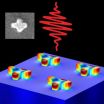(Press-News.org) In a recently published study in the journal Experimental Physiology, Brazilian researchers have confirmed the importance of a specific group of neurons found in a region of the brain known as the retrotrapezoid nucleus (RTN) in detecting changes in carbon dioxide (CO2) levels and in modulating the activity of the neuronal groups that control respiratory activity.
Scientists from the Biomedical Sciences Institute of the University of São Paulo (USP) and the School of Dentistry at the São Paulo State University (Unesp) participated in the study.
"CO2 is important for regulating the acid-base balance of the blood. When the concentration of this gas becomes higher than normal, the blood tends to become more acidic, which promotes the activation of specialized sensors called chemoreceptors," said Eduardo Colombari, professor at the School of Dentistry at Unesp.
"Some of these chemoreceptors are located in the central nervous system; more precisely, on the ventrolateral surface of the medulla oblongata [the region of the brain responsible for neurovegetative control that forms the interface between the spinal cord and the mesencephalon] in the RTN," he explained.
According to Colombari, the neurons in this region express a specific marker that allows them to be identified. This marker consists of a transcription factor called Phox2b, which is involved in the cell differentiation of autonomic and respiratory neurons, that communicate with other neural groups responsible for controlling respiratory activity in order to keep CO2 levels within the physiological range.
Previous studies in the scientific literature, said Colombari, have suggested that various neuronal groups, such as the nucleus of the solitary tract, the raphe nuclei (which secrete serotonin), and the pontine and hypothalamic areas, were involved in the control of chemoreception (in this case, the detection and modulation of CO2 levels).
The group's work has demonstrated, however, that the respiratory changes caused by the increase in CO2 levels are compromised during the occurrence of selective destruction of the RTN neurons that express Phox2b.
The researcher further explained that the work illustrated how a small region of the brain contains neurons with a classic biochemical signature (Phox2b) which are involved in detecting and maintaining adequate levels of CO2, thus allowing the maintenance of homeostasis.
According to Colombari, advances in understanding the mechanisms involved in the perception of CO2 levels in the central nervous system could help prevent cases of sudden death in infants and adults in the future.
INFORMATION:
Study confirms how the body regulates high levels of CO2 in the blood
In experiments published in the journal Experimental Physiology, Brazilian researchers have confirmed the importance of a specific group of neurons found in the retrotrapezoid nucleus
2014-06-11
ELSE PRESS RELEASES FROM THIS DATE:
Expert CLABSI guidance adds real world implementation strategies
2014-06-11
CHICAGO (June 1, 2014) – As central-line associated bloodstream infections (CLABSIs) pose a danger to vulnerable patients, infection prevention and control experts released new practical recommendations to assist acute care hospitals in implementing and prioritizing prevention efforts.
The guidance was published in the July issue of Infection Control and Hospital Epidemiology and produced in a collaborative effort led by the Society for Healthcare Epidemiology of America, the Infectious Diseases Society of America, the American Hospital Association, the Association for ...
Coordinated intervention reduced prevalence of drug-resistant CRE in long-term care
2014-06-11
CHICAGO (June 11, 2014) – A new study found a nationwide effort to control carbapenem-resistant Enterobacteriaceae (CRE) in Israel reduced CRE cases by improving compliance of infection control standards and using a coordinated intervention focused on long-term care facilities. The study was published in the July issue of Infection Control and Hospital Epidemiology, the journal of the Society for Healthcare Epidemiology of America.
"As the global threat of CRE continues to rise, there is a need to better control and understand this bacteria," said Debby Ben-David, MD, ...
EARTH Magazine: Dueling dinosaurs hit the auction block
2014-06-11
Alexandria, Va. — In 2006, a fossil collector and his crew discovered a rare fossil on private land in Montana's Hell Creek Formation: the bones of two fully articulated dinosaurs that appeared to have died together, locked in battle. The fossil duo — a small, pony-sized carnivorous tyrannosaurid and a slightly larger herbivorous ceratopsian, both now preserved in plaster — became known as the "Montana Dueling Dinosaurs." Last November, the fossils were put on the block at Bonhams auction house in New York City — but they did not sell. Had the set fetched the nearly $9 ...
Are Quebecers irrationally opposed to shale gas?
2014-06-11
Quebecers are particularly hostile toward the development of shale gas, but this aversion is driven less by 'not in my backyard' (NIMBY) attitudes than 'not in anyone's backyard (NIABY), according to a comparative study of 2,500 Quebecers and Americans conducted by Éric Montpetit and Erick Lachapelle of the University of Montreal's Department of Political Science. Professors Barry G. Rabe of the University of Michigan and Christopher P. Borick of Muhlenberg College co-led the study in the United States.
The study, commissioned by Quebec's Ministry of the Environment, ...
Findings may advance iron-rich, cadmium-free crops
2014-06-11
ITHACA, N.Y. – With news reports of toxic, cadmium-tainted rice in China, a new study describes a protein that transports metals in certain plants and holds promise for developing iron-rich but cadmium-free crops.
Iron and cadmium are both found in soil and are interchangeably taken up by iron transporters in plants. Pollution and heavy fertilizer use have increased soil cadmium levels in China, for example. In humans, cadmium can damage internal organs and cause cancer. At the same time, iron is an essential nutrient for plants and humans. Iron deficiency affects 30 ...
Manipulating and detecting ultrahigh frequency sound waves
2014-06-11
An advance has been achieved towards next generation ultrasonic imaging with potentially 1,000 times higher resolution than today's medical ultrasounds. Researchers with the U.S. Department of Energy (DOE)'s Lawrence Berkeley National Laboratory (Berkeley Lab) have demonstrated a technique for producing, detecting and controlling ultrahigh frequency sound waves at the nanometer scale.
Through a combination of subpicosecond laser pulses and unique nanostructures, a team led by Xiang Zhang, a faculty scientist with Berkeley Lab's Materials Sciences Division, produced acoustic ...
Famine fear won't sway minds on GM crops
2014-06-11
ITHACA, N.Y. – A sack-hauling time traveler from the 21st century lands in an Irish potato field in 1849, just before a terrible famine, and asks: If you thought genetically modified potatoes could avert late blight disease, spare a million countrymen from starvation and keep another million from emigrating off the Emerald Isle, would you plant these newfangled spuds?
Fast forward to the Internet Age, when communication researchers ran 859 U.S. grocery shoppers through a similar thought experiment: Half the subjects in an online survey read the story of the 1850s Irish ...
Benaroya Research Institute scientists identify drivers of rheumatoid arthritis
2014-06-11
(June 11, 2014 Seattle, Wash.)
Researchers at Benaroya Research Institute at Virginia Mason (BRI) used cutting-edge tetramer technology developed at BRI to find the T cells that drive rheumatoid arthritis (RA). "By using tetramer technology, we were able to examine whether T cells in people with rheumatoid arthritis were increased in number or were unique in other ways," says BRI Associate Director Jane Buckner, MD, who led the study with BRI Tetramer Core Laboratory Manager Eddie James, PhD. The findings were recently reported online in Arthritis & Rheumatology.
This ...
New strategies to combat MRSA in hospitals
2014-06-11
CHICAGO (June 11, 2014) – New guidelines aim to reduce the prevalence of methicillin-resistant Staphylococcus aureus (MRSA), improve patient safety and prioritize current prevention efforts underway in hospitals. This drug resistant bacterium is a common source of patient morbidity and mortality in U.S. hospitals, causing nearly twice the number of deaths, significantly longer hospital stays and higher hospital costs than other forms of the bacteria.
The strategies were published in the July issue of Infection Control and Hospital Epidemiology and produced in a collaborative ...
Targeted mass killings can be prevented
2014-06-11
New Rochelle, NY, June 11, 2014–Disagreeing with comments made by Richard Friedman in a recent New York Times op-ed piece, Mary Ellen O'Toole, PhD, Senior FBI Profiler/Criminal Investigative Analyst (ret.), states that there is "a critical and significant difference" between being able to predict and prevent mass shootings. Dr. O'Toole, who is Editor-in-Chief of Violence and Gender, calls on the media to stop using the names of mass murders, which only fuels their desire for fame and is "a very powerful motivator," in a Perspective in the new peer-reviewed journal from ...
LAST 30 PRESS RELEASES:
Sports injuries sustained during your period might be more severe
World's first successful 2 Tbit/s free-space optical communication using small optical terminals mountable on satellites and HAPS
Can intimate relationships affect your heart? New study says ‘yes’
Scalable and healable gradient textiles for multi‑scenario radiative cooling via bicomponent blow spinning
Research shows informed traders never let a good climate crisis go to waste
Intelligent XGBoost framework enhances asphalt pavement skid resistance assessment
Dual-function biomaterials for postoperative osteosarcoma: Tumor suppression and bone regeneration
New framework reveals where transport emissions concentrate in Singapore
NTP-enhanced lattice oxygen activation in Ce-Co catalysts for low-temperature soot combustion
Synergistic interface engineering in Cu-Zn-Ce catalysts for efficient CO2 hydrogenation to methanol
COVID-19 leaves a lasting mark on the human brain
Scientists use ultrasound to soften and treat cancer tumors without damaging healthy tissue
Community swimming program for Black youth boosts skills, sense of belonging, study finds
Specific depressive symptoms in midlife linked to increased dementia risk
An ‘illuminating’ design sheds light on cholesterol
Who is more likely to get long COVID?
Study showcases resilience and rapid growth of “living rocks”
Naval Research Lab diver earns Office of Naval Research 2025 Sailor of the Year
New Mayo-led study establishes practical definition for rapidly progressive dementia
Fossil fuel industry’s “climate false solutions” reinforce its power and aggravate environmental injustice
Researchers reveal bias in a widely used measure of algorithm performance
Alcohol causes cancer. A study from IOCB Prague confirms damage to DNA and shows how cells defend against it
Hidden viruses in wastewater treatment may shape public health risks, study finds
Unlock the power of nature: how biomass can transform climate mitigation
Biochar reshapes hidden soil microbes that capture carbon dioxide in farmland
Reducing saturated fat intake shows mortality benefit, but only in high-risk individuals
Manta rays create mobile ecosystems, study finds
Study: Mixed results in using lipoic acid to treat progressive multiple sclerosis
Norbert Holtkamp appointed director of Fermi National Accelerator Laboratory
New agentic AI platform accelerates advanced optics design
[Press-News.org] Study confirms how the body regulates high levels of CO2 in the bloodIn experiments published in the journal Experimental Physiology, Brazilian researchers have confirmed the importance of a specific group of neurons found in the retrotrapezoid nucleus


